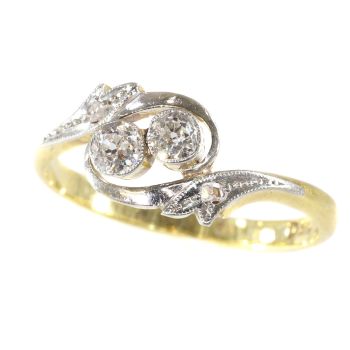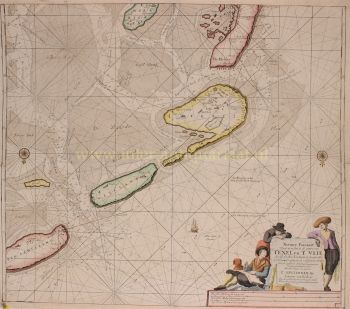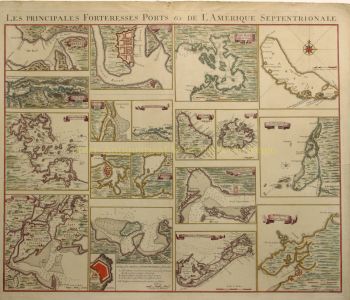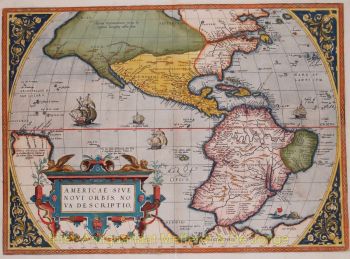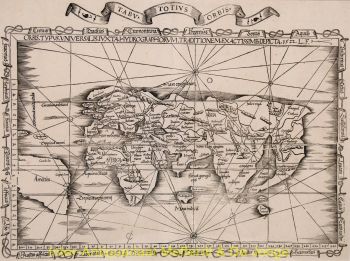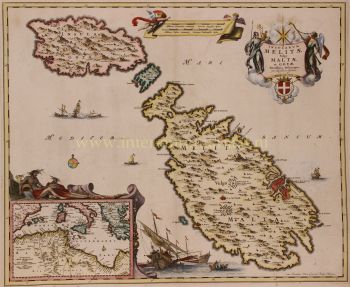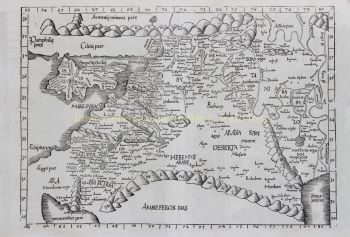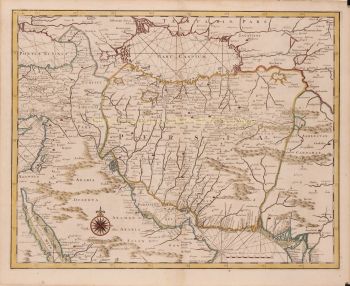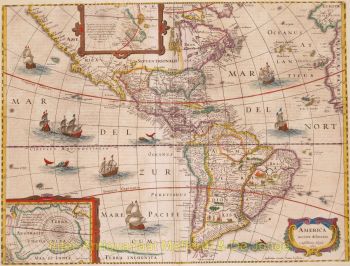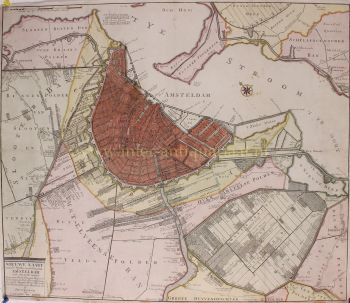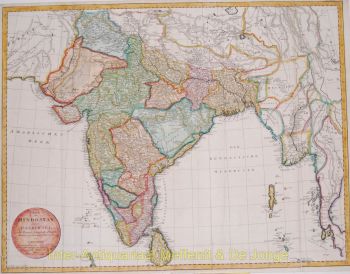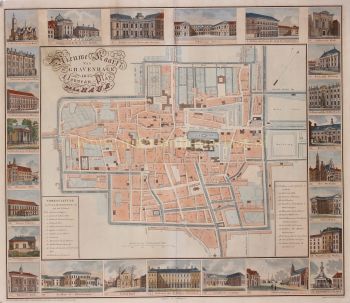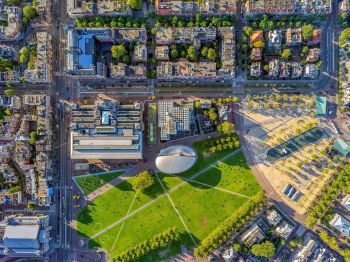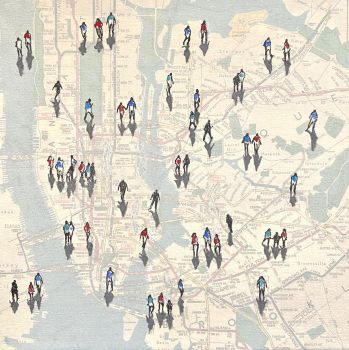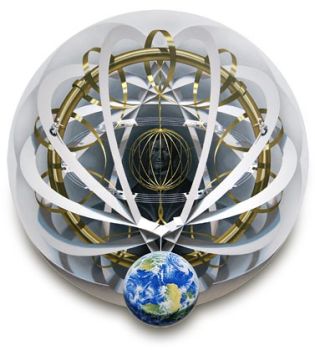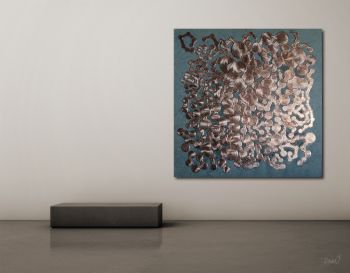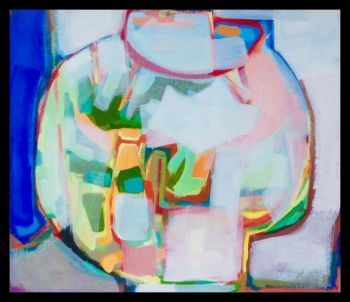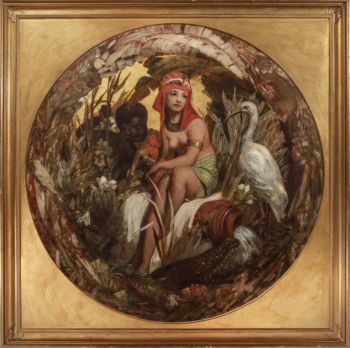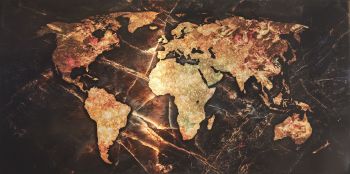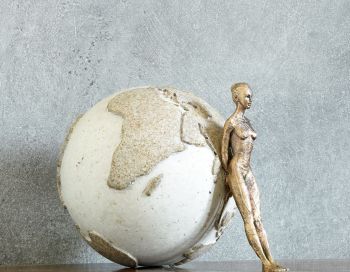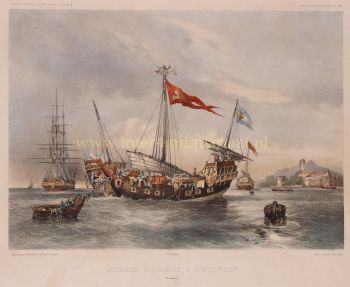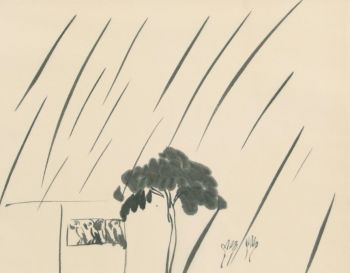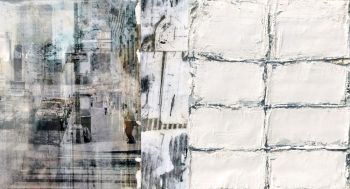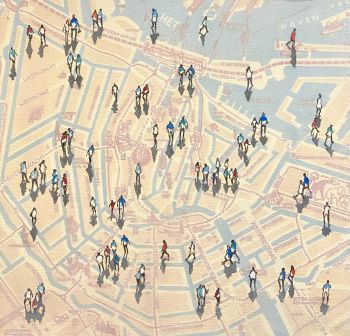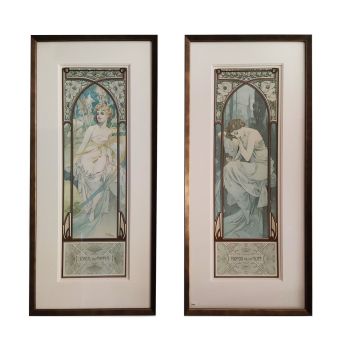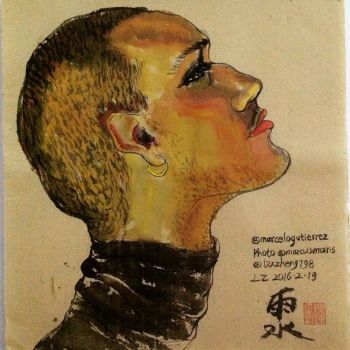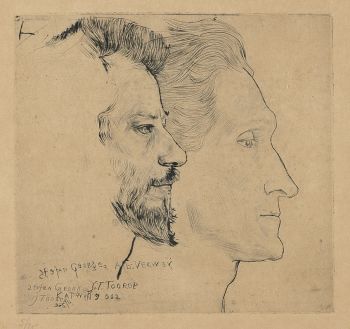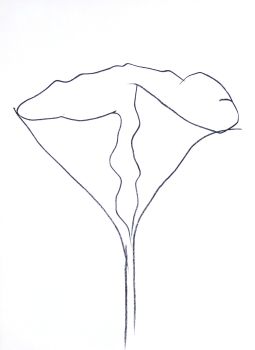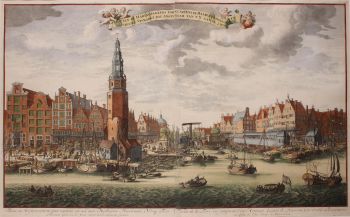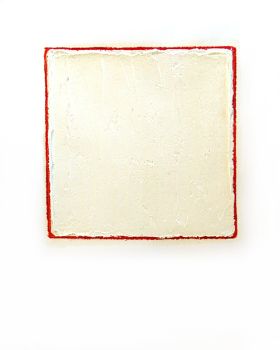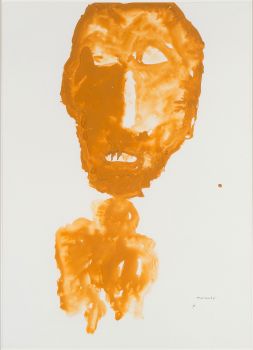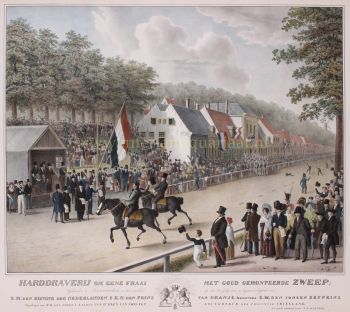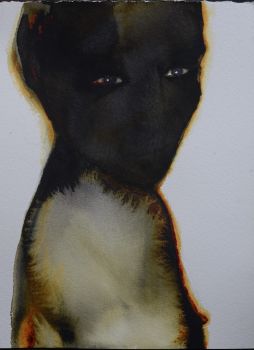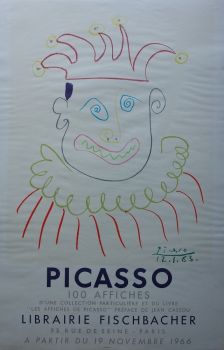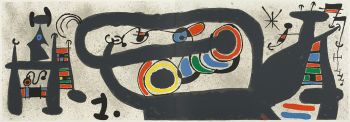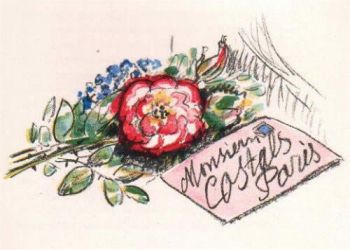A large wall map of Asia by Nicolas de Fer 1647 - 1720
Artista Desconocido
Papel
92 ⨯ 117 cm
Precio a consultar
Zebregs & Röell - Fine Art - Antiques
- Sobre la obra de arteA large wall map of Asia by Nicolas de Fer (1647-1720)
L’Asie divisée selon letendu de ses principales parties, et dont les points principaux sont placez sur les observation des Monsieurs de l’Academie Royale des Sciences. Dressée par N. De Fer, Geographe de monsieur de Dauphin. A Paris chez l’auteur dans l’Isle du Palais, fur le Quay de l’Horloge, à la Sphere Royal. Avec le Privilege du Roy, 1696
Engraved by Hendrik van Loon after a design by Nicolas de Fer, printed on four copperplates, and published by Guillaume Danet, Paris 1724, with later hand- colouring.
H. 92.5 x W. 117 cm
H. 112.5 x W. 139 cm (including frame)
The map is surrounded by richly decorated borders, depicting the peoples of Asia, the Chinese, Japanese, Turks, Indians, Tartars (Russians), Filipinos, inhabitants of the Maluku and Sunda islands, Sri Lankans, people of Colgonda, Malaysia, Thailand, Cochin and Tonkin. Some detail maps show
Arctic areas, with Spitsbergen, Nova Zembla and the northeast of China based on the writings of the Jesuits Martino Martini and Ferdinand Verbiest. Nicolas de Fer started his apprenticeship at the age of twelve in the map-making business of his father, Antoine de Fer (act. 1644-1672). After his father’s death his mother continued the business and after her retirement, Nicolas took over in 1687. He turned it into a flourishing business and thanks to his contacts with the Académie Royale des Sciences in Paris he was
able to use the latest discoveries in geography and subscribe his maps with ‘Dressée sur les nouvelle observations des Messieurs de l’Académie Royale des Sciences.’ In 1690 he became the official cartographer of the Dauphin and later King of France and Spain. He published more than six hundred maps and many atlases, documenting French fortified towns, strongholds and the explorations and discoveries of new territories. Unlike most Dutch cartographers who mainly made maps for navigational purposes, Nicolas de Fer, in the French decorative style of cartography, made a total of 26 large wall maps to adorn the walls in the palaces and castles of the French royals and aristocracy. - Sobre el artista
Puede suceder que un artista o creador sea desconocido.
Algunas obras no deben determinarse por quién está hecho o por (un grupo de) artesanos. Algunos ejemplos son estatuas de la Antigüedad, muebles, espejos o firmas que no son claras o legibles, pero también algunas obras no están firmadas en absoluto.
También puedes encontrar la siguiente descripción:
•"Atribuido a …." En su opinión, probablemente una obra del artista, al menos en parte.
•“Estudio de….” o “Taller de” En su opinión, una obra ejecutada en el estudio o taller del artista, posiblemente bajo su supervisión
•“Círculo de…” En su opinión, una obra del período del artista que muestra su influencia, estrechamente asociado con el artista pero no necesariamente su alumno.
•"Estilo de …." o “Seguidor de…”. En su opinión, una obra ejecutada al estilo del artista pero no necesariamente por un alumno; puede ser contemporáneo o casi contemporáneo
•"Manera de …." En su opinión una obra al estilo del artista pero de fecha posterior
•"Después …." En su opinión, una copia (de cualquier fecha) de una obra del artista
•“Firmado…”, “Fechado…” o “Inscrito” En su opinión, la obra ha sido firmada/fechada/inscrita por el artista. La adición de un signo de interrogación indica un elemento de duda.
•“Con firma…”, “Con fecha…”, “Con inscripción…” o “Lleva firma/fecha/inscripción” en su opinión la firma/fecha/inscripción ha sido añadida por alguien que no es el artista
¿Está interesado en comprar esta obra de arte?
Artwork details
Related artworks
- 1 - 4 / 12
Cornelis Anthonisz Theunissen
MUY RARO PRIMER MAPA IMPRESO DE ÁMSTERDAM, UNA CIUDAD EN ASCENSO1544
€ 175.000Inter-Antiquariaat Mefferdt & De Jonge
 curada por
curada porDanny Bree
1 - 4 / 24Eduard Charlemont
‘Allegories of Africa and America’1872
Precio a consultarZebregs & Röell - Fine Art - Antiques
Cornelis Anthonisz Theunissen
MUY RARO PRIMER MAPA IMPRESO DE ÁMSTERDAM, UNA CIUDAD EN ASCENSO1544
€ 175.000Inter-Antiquariaat Mefferdt & De Jonge
 curada por
curada porDanny Bree
Jean-François Rauzier
Oasis Hotel - Limited edition of 8 2017
Precio a consultarVilla del Arte Galleries
1 - 4 / 24Ellsworth Kelly
Flower, Hommage à Aimé et Marguerite Maeght1982
Precio a consultarHans den Hollander Prints
Rene Rietmeyer
"PORTRAIT OF JOSEPH KOSUTH MAY 1999"1999
Precio a consultarEuropean Cultural Centre Collection
1 - 4 / 24Paulus Franciscus Kromjong
Flores frente a Arearea Aka (alegría) por Gauguin '20th century
Precio a consultarZebregs & Röell - Fine Art - Antiques
Theo Meier
Una mujer balinesa con ofrendas1936
Precio a consultarZebregs & Röell - Fine Art - Antiques
Artista Desconocido
UN NETSUKE MARINE MARFIL DE UN HOLANDÉS CON UN VENTILADOR CHINO18th century
Precio a consultarZebregs & Röell - Fine Art - Antiques
Thea G.F. Eschauzier
Retrato de una niña javanesa1931
Precio a consultarZebregs & Röell - Fine Art - Antiques
1 - 4 / 12


